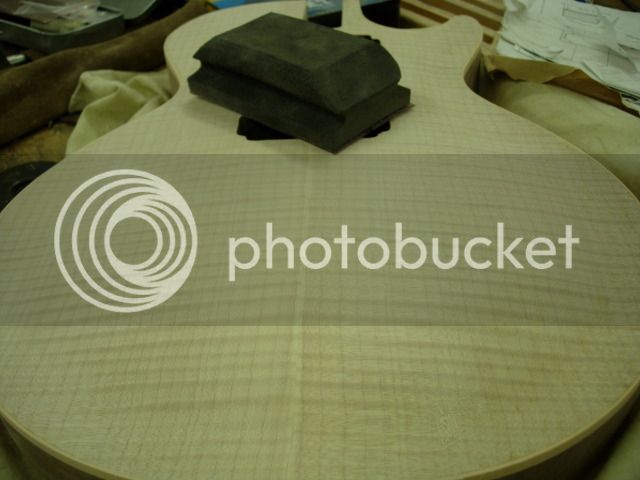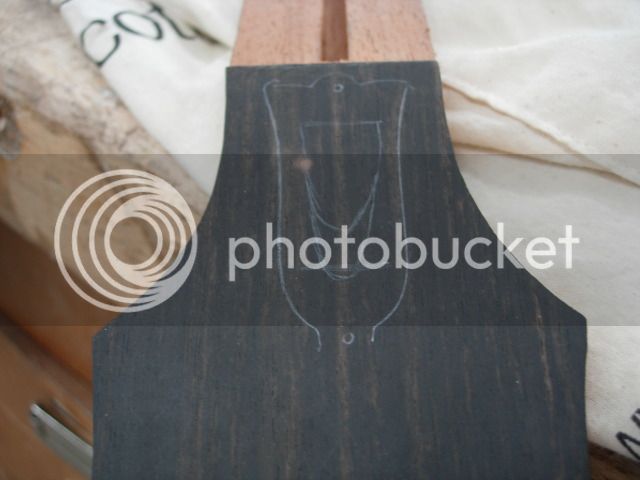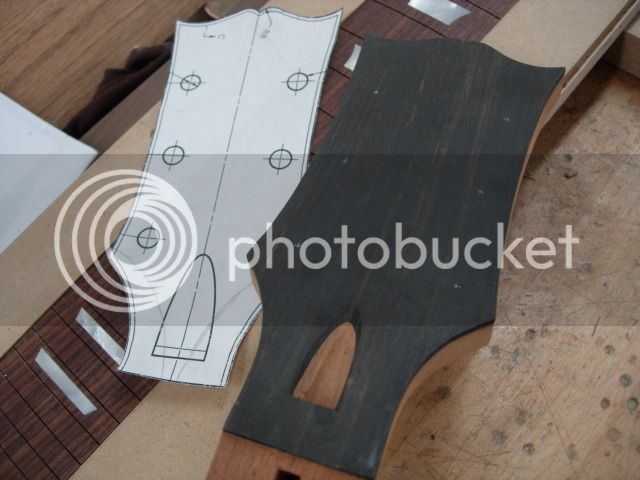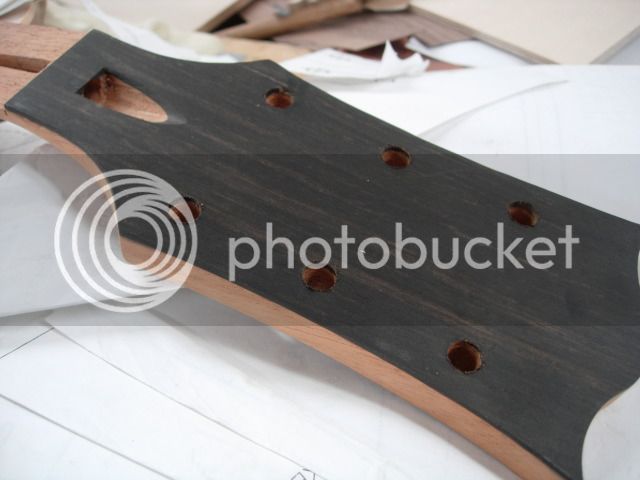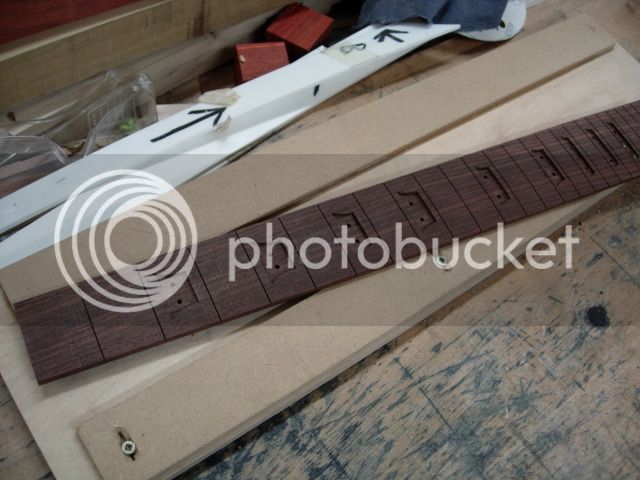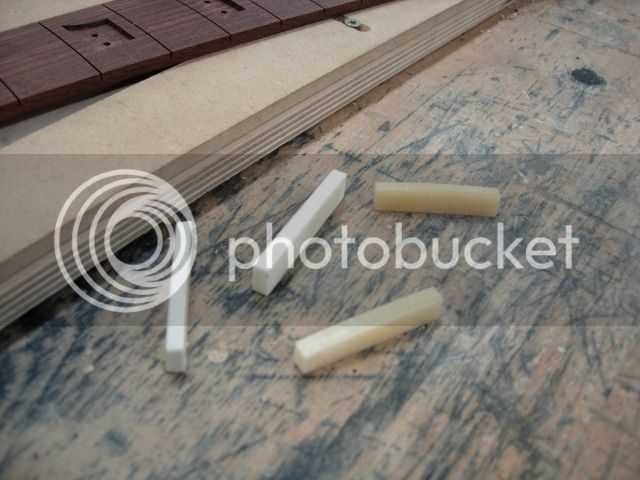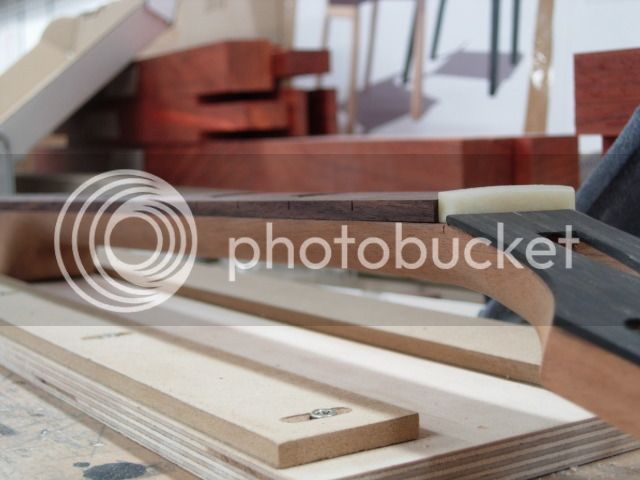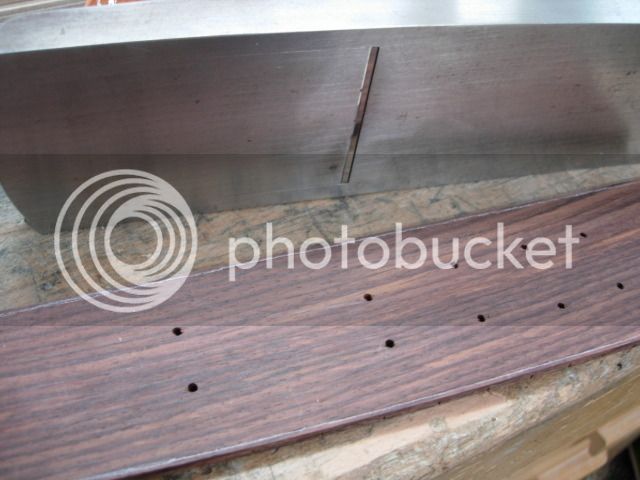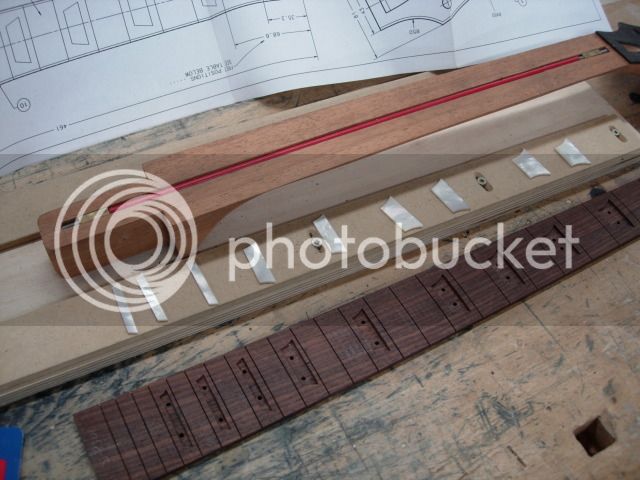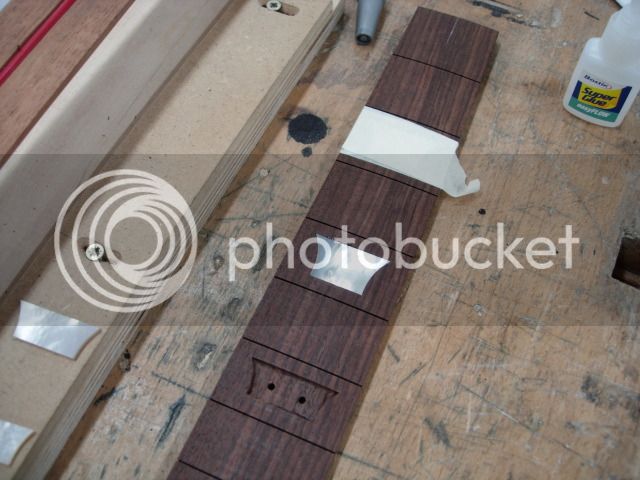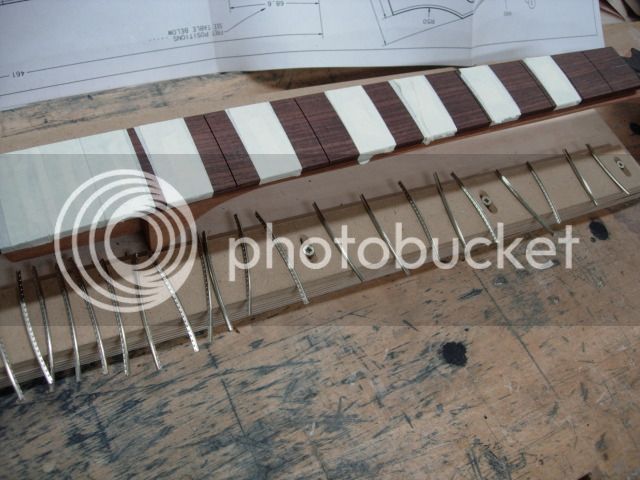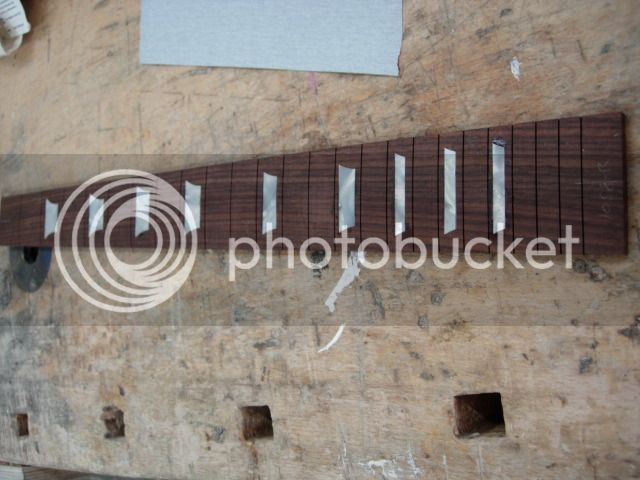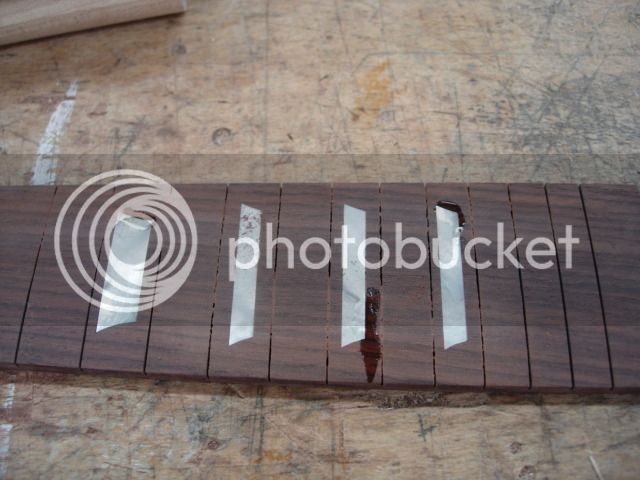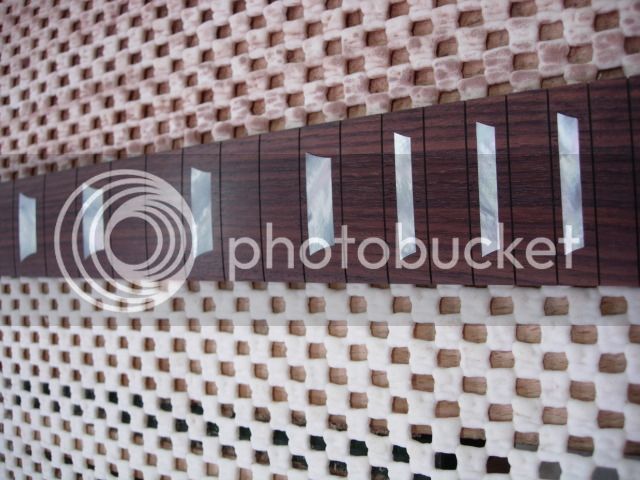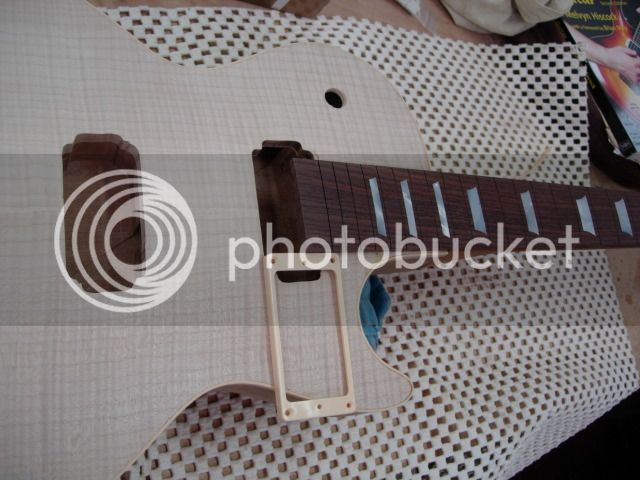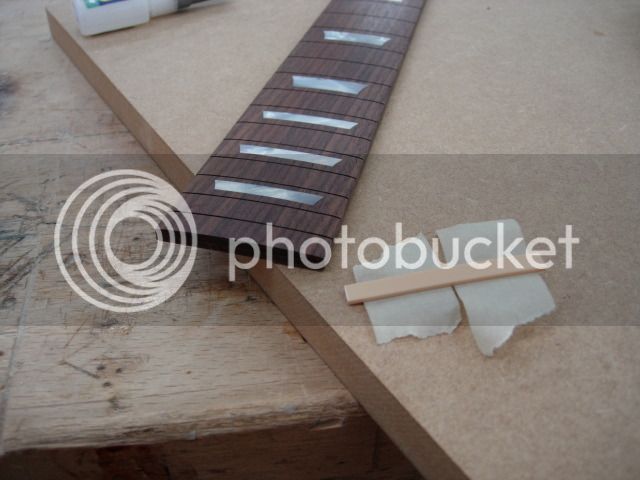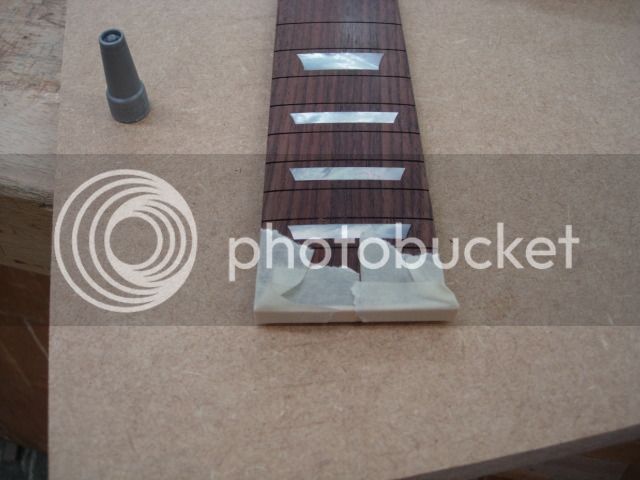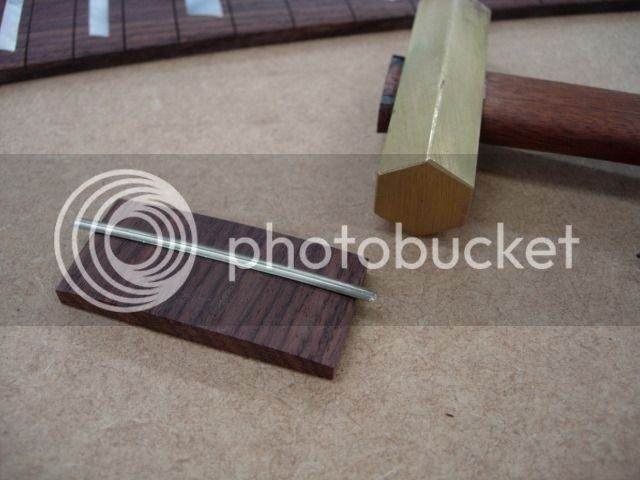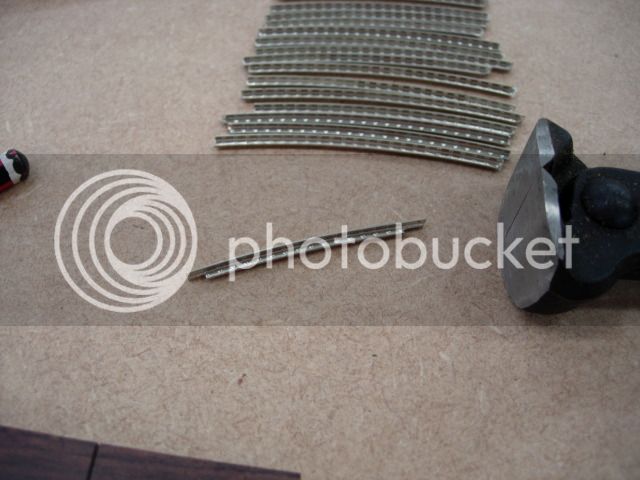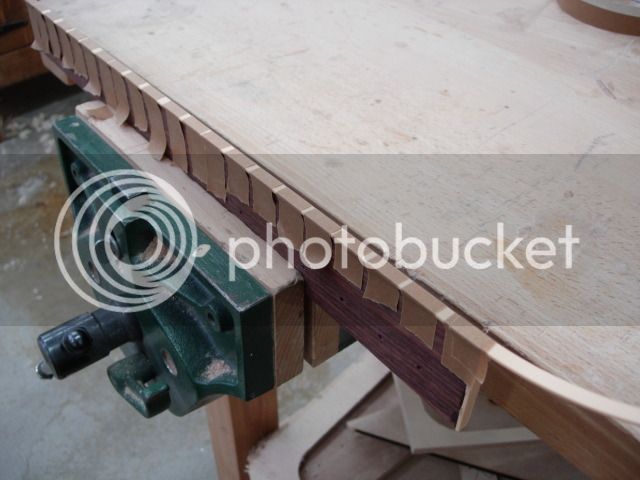Now then, here's an old project that anyone with a long memory will have thought would never see the light of day again (me included...). I finally decided to MTFU and tackle the fiddly jobs and take this to a finish. So, where were we 2 years ago, ah yes I'd glued on the binding and needed to clean up the body and remove the excess superglue.
Quick picture of that
The headstock has been shaped and I now needed to excavate the access point for the trussrod adjustment
Out with the carving chisels and we had this
Then moved on and drilled the holes for the tuners
Now, back to the fingerboard which after making a couple of minor breakout repairs looked like this
I needed to lay the fingerboard on the right place on the neck to get the profile marked up accurately, to do so I needed to put the nut on (not glued at this point). I'd bought several nuts as each one didn't quite cut it for me, eventually went for the big one made out of cow bone
A bit of careful planing yielded a good fit
The fingerboard is also bound so I set the gauge to the thickness of the binding and marked up the board for more planing
Et voila!
Fingerboard and inlay are ready to meet each other for the final time
So out with the superglue again and some tape to hold the inlay in place
Shown there with some trimmed fret wire too. Here's what it looked like once the tape had come off
First pass with the radius sanding block
My inlay hole trimming wasn't perfect, there were some very thin gaps, so I sanded and filled the gap with sawdust and then dribbled on some superglue to fix it
Going up through the grades and we had quite a nice finish
Just double checking how much of the fingerboard to cut off, don't want to get that wrong...
Now ready to start binding the fingerboard with that horrible pastic crap again
Quick test fretting with the hammer, Philly fans make recognise the hammer
Yet another of the rather tedius jobs, trimming the fret wire closer to length and removing exactly the right amount of tang - and not getting the frets out of order
Getting ready to do the long binding on the fretboard, using binding that insists it wants to be curly
There's a couple of jobs I haven't shown (drilling the jack plug hole and pickup selector switch hole) but you'll see those on the finished body. Next up is fretting and then glueing the nut and fingerboard to the neck, then I have to drill the most important holes of the entire project, the bridge and saddle




